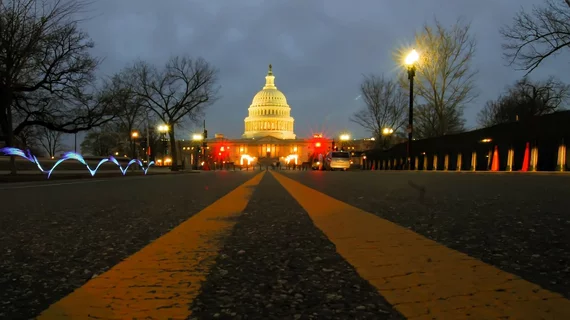Imaging advocates, bipartisan lawmakers unite to oppose ‘misguided and massive’ Medicare pay cuts
Imaging advocates and U.S. House lawmakers are uniting to fight against proposed pay cuts in nuclear medicine and other specialties set to hit providers in 2022.
The Centers for Medicare & Medicaid Services first revealed the reductions in July as part of its latest physician fee schedule. To help offset pay increases elsewhere, CMS is planning to reduce reimbursement for one of the most commonly used single-photon emission computed tomography codes by 12%. Other updates would drag down pay for services provided by radiation oncologists and interventional radiologists.
In an alert to members Monday, the American Society of Nuclear Cardiology urged physicians to fight such changes.
“ASNC opposes these cuts and needs you to amplify its message,” the Fairfax, Virginia-based society said Aug. 30.
Reps. Bobby Rush, D-Ill., and Gus Bilirakis, R-Fla., have also reportedly signed on to the effort. ASNC shared a letter from the two House lawmakers, pressing others in Congress to join them in opposing “misguided and massive” cuts to physician pay. The two congressmen highlighted a planned wage increase for clinical labor staff such as mammography technologists or angiography techs. Due to budget neutrality requirements, increases in one place necessitate cuts elsewhere, spelling the SPECT reduction. Treatments such as uterine fibroid embolization and endovenous radiofrequency ablation—often used by Black and Latino patients—face reductions north of 20%, the two noted.
“These year-over-year ‘budget-neutral’ cuts, being implemented during a pandemic, are causing significant disruption to the healthcare system and are being implemented without regard to patient outcomes, actual [physician fee schedule] provider resource needs, or any other rational policy,” Rush and Bilirakis wrote in the letter slated to be sent to Meena Seshamani, MD, PhD, deputy administrator and Director of the Center for Medicare.
The two urged CMS not to finalize the clinical labor change “at this time” while also asking the agency to work with Congress on fundamental reform to the fee schedule. Both ASNC and lawmakers are also concerned about the potential impact of a proposed 3.75% reduction in the conversion factor, also tied to budget neutrality.

